Lessons from WW2
Italy was one of the first nations to develop tanks, first in 1916 the FIAT 2000, and right after it, the Renault FT inspired FIAT 3000 in 1919. Mass production began in 1930 with the CV-33 tankettes, and the first medium tank appeared in 1938. However both in technological advance, quality, and mass production, Italy somewhat lagged behind its adversaries, the British and moreover the Americans and Russians. Despite some heroic actions, Italian armour performed rather poorly, both in North Africa and on the Eastern Front.Nevertheless, actions led under Rommel's joint command of Italo-German Forces until 1943 and better late models (like the Semovente 90/53 and other tanks hunters, the "Italian Stug" (Sem. 75/18), or the Heavy P26/40 and the scout Breda Lince improved the situation. However, after a serie or defeats Mussolini's was evicted from power while an armistice was signed in november 1943. The yesterday Ally became an instant enemy, capturing most Italian tanks produced in Italy, while Fiat and Ansaldo factory line continued on for monthes. The Wehrmacht took these vehicles and extensively used them in Northern Italy until the capitulation.
Italy and NATO
In 1946 the kingdom was replaced by a Republic and the army changed its name to Esercito Italiano, with five infantry divisions at the beginning. The Italian Army joined NATO soon, and was part of the Allied Forces Southern Europe, ready to defend against a possible invasion from or through Yougoslavia. Lieutenant General Maurizio Lazzaro De Castiglioni was in charge of this crucial Northeastern sector, with a HQ located at Verona.These forced comprised the best equipped units, the Mantova Infantry Division (Udine), the Folgore Motorized Infantry Division (Treviso) and the Trieste Motorized Infantry Division (Bologna), as well as the Alpini brigades Julia (Cividale del Friuli) and Tridentina (Brixen) as well as the Ariete Armoured Brigade in Pordenone. These units participated in the first large scale NATO exercise for this sector, "Italic Weld", together with Greece, Turkey, and the USA.

Esercito Italiano military districts. The Northeastern frontier concentration of units shows the importance of this narrow "gate" to Italy between the Adriatic and the Alps.
Articles (*post 1990)
- OF-40
- Ariete*
- SIDAM-25
- VCC-1
- Dardo*
- Arisgator*
- Freccia*
- OTO M113A1
- OTO M106
- Fiat 6614
- Fiat 6616
- Centauro
- Puma*
- Iveco Orso*
- Iveco VM90*
- Iveco VTLM Lince*
- B1 Centauro (TE)
- B2 Centauro (TE)
The Italian Army during the Cold War
From 1958-59, the Italian army was divided between the III Army Corps (Milan), IV Alpine Army Corps (Bolzano) and V Army Corps. From 1975 to 1985 came the biggest reform of the Italian Army so far, as the intermediary regimental level was deleted. Battalions were placed under direct command of new brigades. In 1989, there were 26 combat brigades, spread among the 3rd and 5th army corps and the 4th Alpini Army corps.Remaining brigades went under command of the VII Territorial Military Command (Florence), VIII Territorial Military Command (Rome), Motorized Brigade Acqui (L\'Aquila), X Territorial Military Command (Naples), XI Territorial Military Command (Palermo), and the Autonomous Military Command Sardinia (Cagliari).
Organic composition of the Italian Armoured brigade:
- 1 Command & Signals Battalion
- 2 Tank Battalions (M48, M60 Patton, now Leopard 1A2 tanks)
- 1 Mechanized Infantry Battalion (M113 APCs)
- 1 Self-propelled Field Artillery Group (M109 howitzers)
- 1 Logistic Battalion
- 1 Anti-Tank Company
- 1 Engineer Company
- 1 Command & Signals Battalion
- 1 Tank Battalions (M48, M60 Patton, now Leopard 1A2 tanks and Ariete)
- 3 Mechanized Infantry Battalions (M113 APCs)
- 1 Self-propelled Field Artillery Group (M109 howitzers)
- 1 Logistic Battalion
- 1 Anti-Tank Company
- 1 Engineer Company
New Challenges (1990)
With the end of the cold war, budget cuts saw a gradual decrease in units. Armoured brigades saw their leopards and M60s replaced gradually by the new Ariete MBT. The first 100% purely Italian MBT design in the 1990s. By 2008 and the subprimes crisis followed by a European financial crisis, budget cuts saw the reduction on units and their organic components while a wave of new purely national vehicles arrived, like the Centauro wheeled tank destroyer, Freccia and Dardo IFVs, and lighter vehicles like the Puma family and the Iveco MPV which met outstanding success on export. Suppliers of the Italian Army were primarily USA (M47, M48, M60, M113 and variants) but also includes France (for the NBC-proof VAB), and Sweden (For the Bandvagn 206s Armoured personnel carrier used by the Alpini).Modern Italian Armour

The Ariete MBT (1995), developed by OTO melara and Iveco-Fiat and based on the previous experience in the Leopard and OF-40. 200 are currently in service, replacing the M60s and Leopards.
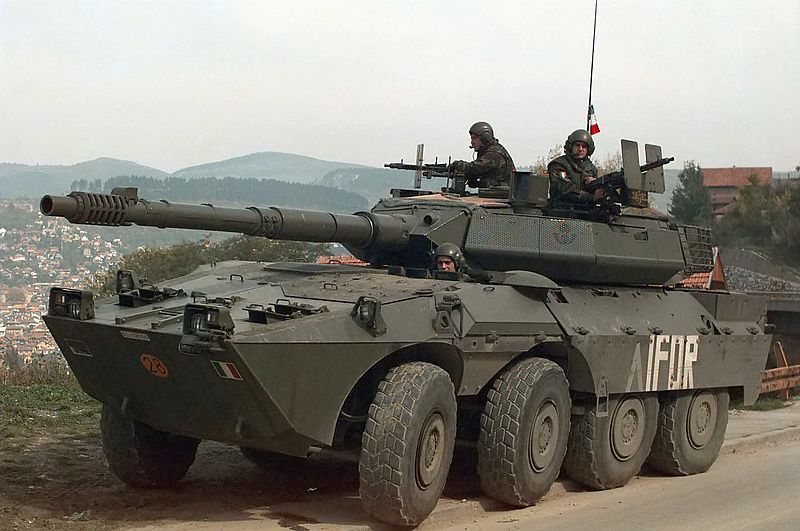
With the B1 centauro tank destroyer (1986), italy inaugurated the wheeled tank destroyer genre. 400 were built, plus the Spanish vehicles, Jordan and Oman.
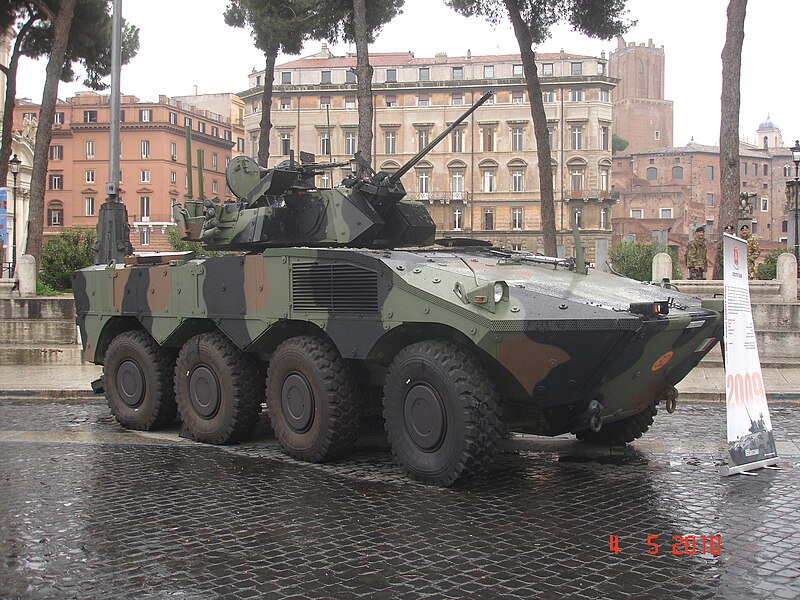
The Freccia IFV, derived from the Centauro (1990); 250 are in service.

The Dardo, main tracked IFV of the Italian Army (1998) produced to 200 vehicles so far.

The Puma 4x4 and 6x6 wheeled APCs family (1999) was produced to 570 vehicles combined, both the Italian Army, Libya, and the Argentine Army.

The Iveco LMV Lince 4x4 recce (2006) is perhaps one of the most outstanding export success of the Italian Industry in the recent years. It is highly modular, with MR capabilities (V-shaped underbelly), and derived into the Panther Command and Liaison Vehicle (CLV). 11 countries purchased it, included Russia.
Links
The Italian Army (Esercito Italiano) on WikipediaEsercito Official webpage

Carro Armato M47 or Italian M47 Patton. 2480 were in service with Italy, by far the largest contingent of this type of tank in service worldwide, until the 1970s. (Turkey 1,347, West Germany 1,120, France 890).
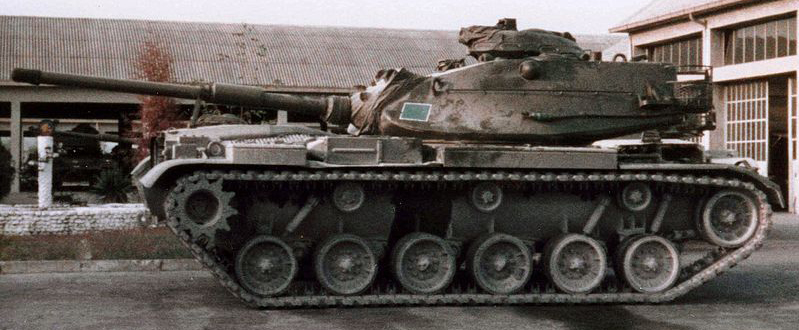
Carro Armato M60A1, the standard Italian M60 Patton. 300 were in service from the 1970s to the 1990s. Now retired.

Leopard 1A5 in service with the Italian Army nowadays. 120 surplus turrets were purchased from the Bundeswehr and served to upgrade 200 A2s hulls purchased in the meantime. The first batch of Leopard 1s (200) was delivered between 1971 and 1972, followed by two batches built by OTO Melara under licence, the first 400 Leopard 1s in 1974-80, and second of 120 build in 1980-1983. In addition OTO Melara assembled 28 Pionierleopard AEV in 1985 (plus 12 produced in Germany) and 64 Bibers AVLBs. All Leopards were gradually retired in 2003 to 2008, leaving only the Ariete in service.

The VCCI, an Italian all-out improvement of the M113 APC. The up-armoured variant with EAAK armor was revealed in 1980 and conversions were made since. The vehicle here is shown without add-on appliqué armour.
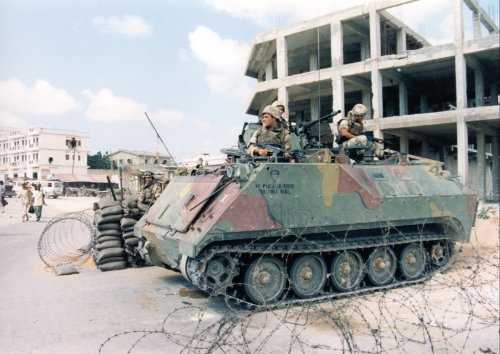
M113 VCCI in the streets of Mogadisciu, 1995.

The Arisgator, a fully amphibious modification of the M113, recalling the US-built LVTP-7 (which was tested by the Italian Army).
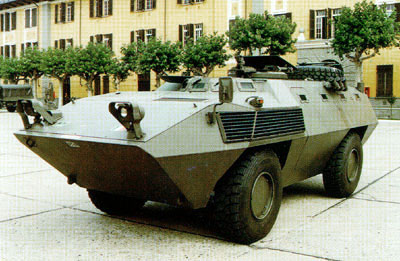
The FIAT 6614 4x4 wheeled amphibious APC (1972): A commercial success together with the 6616 (10 countries), produced to 1443 vehicles combined.

The Palmaria SPG, based on the OF-40 chassis (1981). 210 were built, 185 are still in service today. Also purchased by Libya, Argentina (25) and Nigeria (25).
The SIDAM-25, a SPPAG adaptation of the versatile M113 Gavin (1985).

Cold War Tanks


































Cold war tanks posters

Cold War Main Battle Tanks

Cold War Soviet Army
Museums, Movies, Books & Games
The Tanks and Armor in pop culture
Tanks and armored vehicles in general are only really grasped when seen first person: The mass, the scale, it's all there. Explore also the way tanks were covered in the movie industry, in books and in video games.Movies:
Best tanks movie on warhistoryonline.com
On imdb.com
On bestsimilar.com/
miltours.com
liveabout.com/
watchmojo.com
Video Games:
pcgamesn.com
historyhit.com
levvvel.com
vg247.com/best-tank-games
mmobomb.com/
alienwarearena.com


